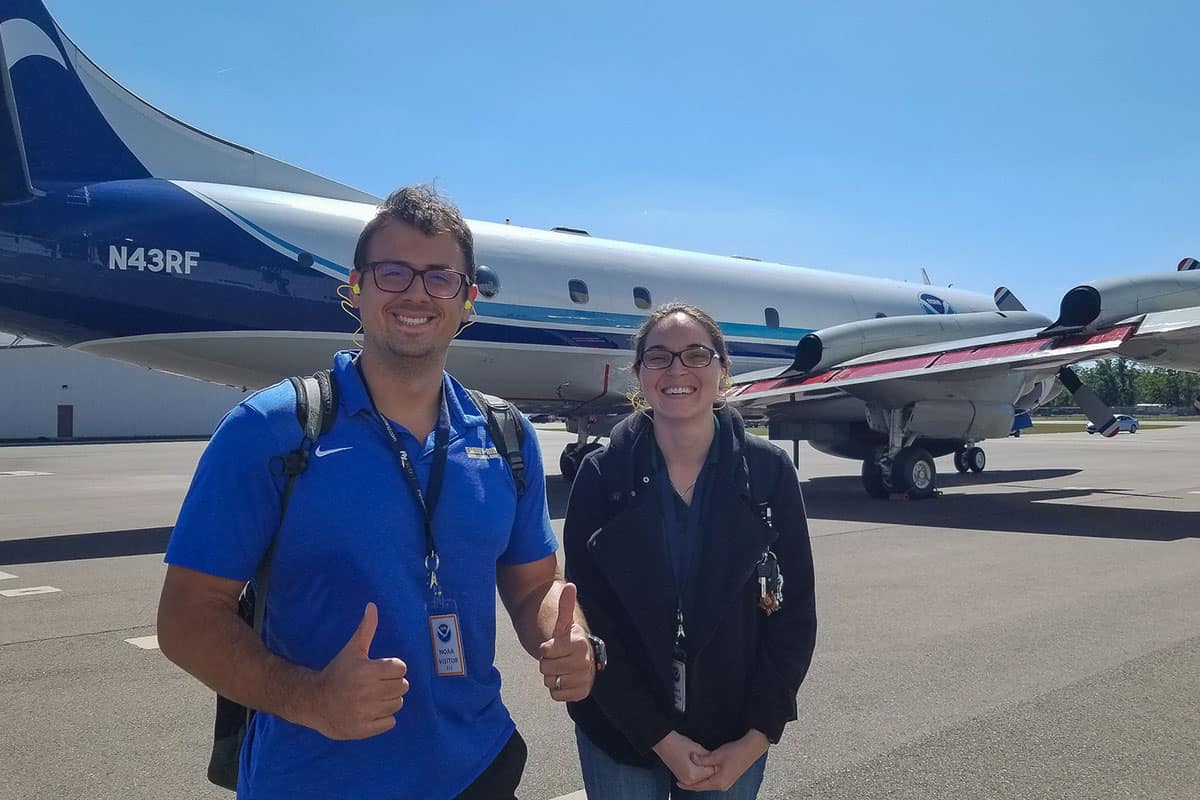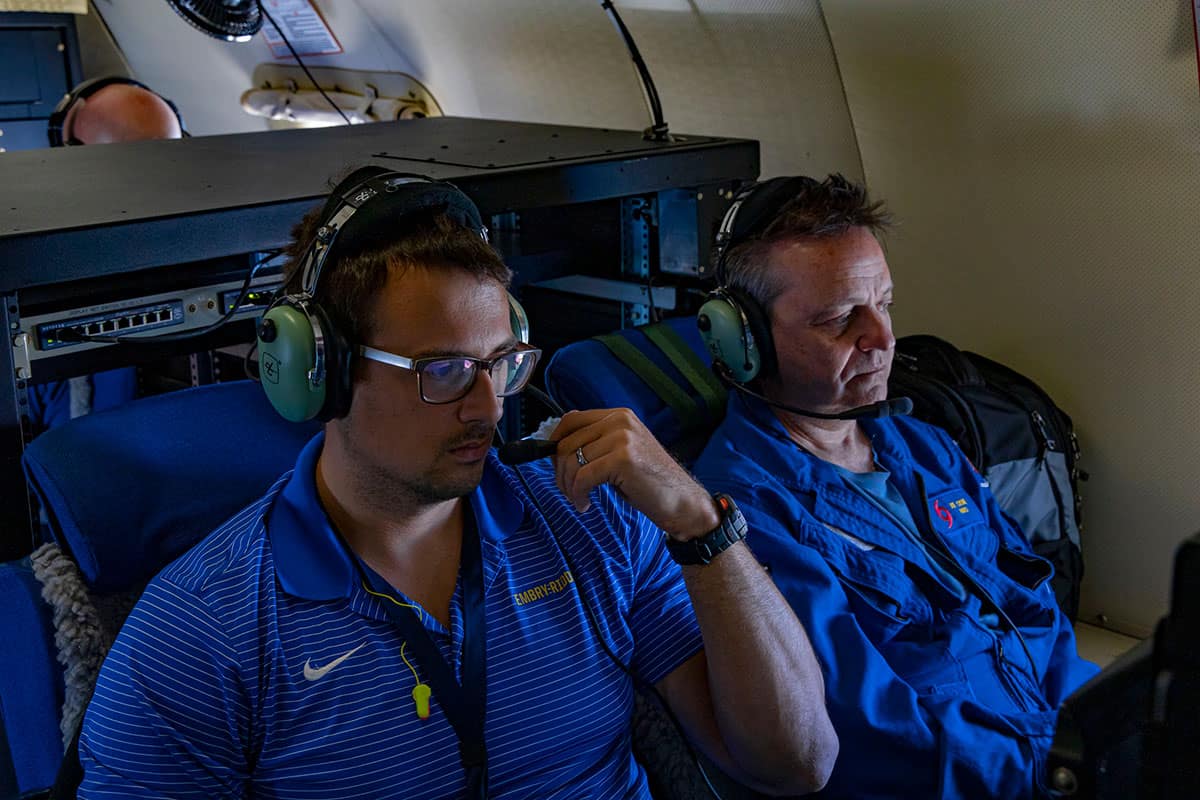Embry-Riddle Researchers Develop New Method to Quantify Flight Bumpiness

Embry-Riddle researchers have devised a new method to calculate just how harrowing a bumpy flight is for the crew and passengers experiencing it.
The research, published in the flagship journal of the American Meteorological Society, began after Dr. Josh Wadler — an assistant professor of Meteorology, who flies aboard Hurricane Hunter planes to perform research for the National Oceanic and Atmospheric Administration (NOAA) that helps save lives and property — rode into the eye of Hurricane Ian in September 2022.
The flight was especially dramatic, with equipment flying off shelves and an off-duty pilot’s bed thrown to the floor. A video taken by NOAA engineer Nick Underwood recorded the experienced crew and researchers onboard reassuring each other during the chaos. They later described it as the bumpiest flight they had ever experienced, Wadler said.
Despite being an experienced hurricane researcher who had been flown into several powerful storms, Wadler said, “Hurricane Ian was just different. You expect to hit some big up-down motions, but I had never experienced that amount of side-side motions in a storm before.”
Wadler set out to determine whether the turbulence experienced during the flight could be quantified. He created an algorithm to quantify bumpiness experienced by those on an airplane and gathered data from Hurricane Hunter flights going back to 2004.
Wadler calculated the acceleration and “jerk,” or the rate of change in acceleration over time, on each seat in the plane. Acceleration was combined with “jerk,” and both were accounted for in all directions: up-down, left-right and front-to-back.

Wadler and Joe Cione, lead meteorologist with NOAA, on a Hurricane Hunter flight. (Photo: Jake Barlow)
Previous turbulence algorithms have focused almost exclusively on up-and-down motion and the atmospheric conditions encountered rather than the experience of the people on board.
“We applied the metric to rank the bumpiest flight on the Hurricane Hunters,” said Wadler. “The flight I was on into Hurricane Ian in 2022 came in second of all the flights we evaluated.”
Wadler said the bumpiness-assessment metric can also be applied to commercial flights. He worked on the research with co-principal investigator Dr. Kevin Adkins, professor of Aeronautical Science, and then student Lauren Villafane.
“Information collected from this research could lead to further research in keeping crews safer in the future,” said Villafane, who graduated from Embry-Riddle and now works as a National Weather Service forecaster.
The researchers also found a general increase in the bumpiness of the Hurricane Hunter flights from 2004 to 2023 and that each seat on a plane experiences different rotational motions, translating into various degrees of bumpiness.
In his seat at the front of the plane, the pilot of the Hurricane Ian flight experienced a flight 34 percent bumpier than any other Hurricane Hunter flight for which good data is available.
As it turned out, Wadler had it relatively easy in his seat on the Hurricane Ian flight, with the lowest bumpiness value experienced.
Wadler believes that terrifying moments during extreme turbulence can affect the brain’s ability to make decisions, which has ramifications for pilot performance. He hopes to work with human factors scientists and behavioral researchers in the future to better understand the effect of bumpiness on cognitive function.
The journal article is titled “What Was the Bumpiest Flight Ever on NOAA’s WP-3D Hurricane Hunter Aircraft?” and has been published online by the Bulletin of the American Meteorological Society and will also come out in print. The research was funded by the Embry-Riddle Faculty Innovative Research in Science and Technology (FIRST) grant, with help from the Faculty Research Development Program. The research team also included scientists from NOAA Research and NOAA’s National Weather Service.

 Michaela Jarvis
Michaela Jarvis